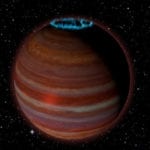 Travel
Travel  Travel
Travel  Creepy
Creepy 10 Haunted Places in Alabama
 History
History Top 10 Tragic Facts about England’s 9 Days Queen
 Food
Food 10 Weird Foods Inspired by Your Favorite Movies
 Religion
Religion 10 Mind-Blowing Claims and Messages Hidden in the Bible Code
 Facts
Facts 10 Things You Never Knew about the History of Gambling
 Weird Stuff
Weird Stuff 10 Cool and Creepy Facts about Collecting Tears
 Humans
Humans The Ten Most Lethal Gunslingers of the Old West
 Misconceptions
Misconceptions 10 Phony Myths and Urban Legends That Just Won’t Die
 History
History 10 Amazing Roman Epitaphs
 Travel
Travel Top 10 Religious Architectural Marvels
 Creepy
Creepy 10 Haunted Places in Alabama
 History
History Top 10 Tragic Facts about England’s 9 Days Queen
Who's Behind Listverse?

Jamie Frater
Head Editor
Jamie founded Listverse due to an insatiable desire to share fascinating, obscure, and bizarre facts. He has been a guest speaker on numerous national radio and television stations and is a five time published author.
More About Us Food
Food 10 Weird Foods Inspired by Your Favorite Movies
 Religion
Religion 10 Mind-Blowing Claims and Messages Hidden in the Bible Code
 Facts
Facts 10 Things You Never Knew about the History of Gambling
 Weird Stuff
Weird Stuff 10 Cool and Creepy Facts about Collecting Tears
 Humans
Humans The Ten Most Lethal Gunslingers of the Old West
 Misconceptions
Misconceptions 10 Phony Myths and Urban Legends That Just Won’t Die
 History
History 10 Amazing Roman Epitaphs
10 Galactic Mysteries Of The Milky Way
Space is full of mysteries. From the questions we’ve yet to answer about stars to the planets and moons in our own solar system, there’s a lot of figuring out to be done with our telescopes. Yet some mysteries are on an even greater scale, and the following ones are literally galactic.
10Birthplace Of The Sun

Stars like our sun are born in clusters with other similar stars. These stellar siblings form from the same gas cloud, and so they have the same chemical composition. Yet we’ve examined 100,000 stars within 325 light-years of Earth and found only two that are a close match to the Sun. Our sun is alone, meaning it was either kicked out or drifted out of its cluster 4.5 billion years ago.
A good candidate for its birthplace was Messier 67, a cluster in the Cancer constellation around 2,900 light-years away. The stars there are a similar age, temperature, and chemistry to our sun. However, astrophysicists from the National Autonomous University of Mexico did simulations in 2012 and found that M67 simply didn’t work.
The Sun would have needed an unlikely alignment of several massive stars to kick it out, and the necessary speed would’ve ripped apart the planetary disk, keeping Earth from ever forming. In addition, the vertical bobbing of M67 in the galactic plane is five times greater than the Sun’s, and they should be the same.
It’s possible the Sun’s cluster simply doesn’t exist anymore, and all of its cousins have drifted apart. Another hypothesis is that it came from closer to the center of the galaxy, where a lot of Sun-like stars are found.
The best chance for figuring out the answer is the European Gaia satellite. Launched in 2013, Gaia is mapping the chemical makeup of one billion stars. The mission is due to finish by 2018 and will give unprecedented knowledge about the evolution of the galaxy.
9Waves Made Of Stars

Discoveries in astronomy often aren’t made just by looking through a telescope and seeing what’s there. Sometimes, an observatory produces a vast array of data from a piece of the sky, and scientists take years to make conclusions from the information. The Sloan Digital Sky Survey is one such project. Using a telescope in New Mexico, it’s spent the last decade observing 930,000 galaxies, 120,000 quasars, and nearly half a million stars in the Milky Way.
Using this data, a team of astronomers noticed something about the vertical distribution of stars. These often clump together, and the team noticed a pattern in 300,000 stars that resembles a sound wave. They coined the term “cosmoseismology” for their paper, suggesting something had caused the galaxy to “ring like a bell.”
The most likely explanation is that something collided with and passed through our galaxy in the last 100 million years. The researchers weren’t able to pinpoint what—it may have been a dwarf galaxy or possibly a dark matter structure. It may have been multiple events, and they even note that the wave may be the result of something ongoing.
Once again, the researchers hope the billion stars mapped by Gaia will provide answers. They suspect that there may be a rich pattern of wave structures hidden throughout the galaxy, which will open up a brand new window into its history.
8High-Velocity Clouds

High-velocity clouds (HVCs) were discovered in 1963. These collections of interstellar gas move in different speeds and directions to the Milky Way’s rotation, off by at least 50 kilometers (32 mi) per second. They’re mostly made of hydrogen and are believed to be falling into the galaxy from intergalactic space. Where they come from, though, is yet to be resolved.
Jan Oort, one of the discoverers of the clouds, suggested the gas is a remnant of the formation of the galaxy. Another explanation is that gas ejected from the Milky Way is falling back in as a Galactic Fountain. If this were the case, the rising gas would be hard to spot due to all the other material in the way.
The material may come from objects in orbit around our galaxy. One such item is Complex H, a small galaxy itself, believed to be in a retrograde orbit around the Milky Way. As it moves, it excretes gas onto our galaxy.
One HVC, Smith’s Cloud, moves toward the Milky Way’s disk at around 73 kilometers (45 mi) per second and will merge with our galaxy in around 27 million years. Its trajectory suggests it already passed through the Milky Way 70 million years ago. This should’ve ripped the cloud apart, and scientists believe a halo of dark matter may have kept it together.
7Magellanic Clouds

Magellanic Clouds are companion galaxies to the Milky Way, discovered during Ferdinand Magellan’s pioneering voyage around the world in the 16th century. The Large Magellanic Cloud is 14,000 light-years across and around 160,000 light-years from Earth. The Small Magellanic Cloud is half the diameter of its cousin but 30,000 light-years farther away. For comparison, the Milky Way is 140,000 light-years across.
The clouds are 13 billion years old and were believed to orbit the Milky Way. However, measurements taken by Hubble suggest they’re moving twice as fast as we originally thought. If that’s the case, the Milky Way shouldn’t be massive enough to keep them in orbit. Figuring out if they are in orbit has become a new mystery. If they are, it would mean the Milky Way could be twice as massive as previously thought.
Whether the clouds are here to stay or merely passing by, they attract plenty of mystery. Scientists recently solved a four-decade-long question about the source of the Magellanic Stream, a ribbon of gas that stretches halfway around the Milky Way. They discovered that most of it came from the smaller cloud, though levels of oxygen and sulfur in newer regions match the larger cloud.
In 2007, Australia’s Parkes telescope picked up a burst of radio waves while examining the small cloud. The power behind the blast indicates an extreme event, such as a collision of neutron stars or the death of a black hole. It almost certainly came from farther away than the cloud, but its exact source remains a puzzle.
6Galaxy X

The most popular astronomical conspiracy theory is the existence of “Planet X.” It suggests that a planet the size of Jupiter orbits the Sun on an erratic orbit, secretly tracked by NASA. While there are a lot of problems with that idea, there’s a very real possibility of the existence of “Galaxy X.” It’s a dwarf galaxy on the opposite side of the Milky Way to us, which we can’t see due to the gas and dust in the way. Galaxy X would be up to 85 percent dark matter.
UC Berkeley theoretical astronomer Sukanya Chakrabarti is leading the hunt. She’s developed a method for finding dark galaxies by examining ripples in the distribution of hydrogen gas in spiral galaxies. Hydrogen gas extends up to five times farther out from the center of the galaxy than the area populated with stars, and so orbiting galaxies will make ripples in the gas.
Chakrabarti predicts that Galaxy X will have a mass around one-hundredth of the Milky Way’s. The method to find the hidden galaxy has been tested on other galaxies with a known companion and can find bodies just one-tenth as massive as even that.
5The Lithium Problem

The lithium problem is one of the longstanding niggles of cosmology. Lithium is the third-lightest element in the universe, after hydrogen and helium, and models of the Big Bang predict what levels of those elements we should expect to find. Those models work for everything but lithium.
In the Milky Way’s oldest stars, the isotope lithium-7 is found at around one-third of expected levels. Lithium-6 appears at a rate of around 1,000 times too much, although it’s much harder to count.
No explanation has worked. Potential answers throw off the amounts of other elements. And the problem has only gotten more difficult. A 2008 astrophysics paper reflected the way cosmologists feel about it with the title A Bitter Pill: The Primordial Lithium Problem Worsens.
Research suggesting the early galaxy was populated with microquasars added to the woes. These miniature black holes produce jets of super-hot plasma with enough energy to fuse hydrogen into helium. In 2012, a team from Sweden and Germany calculated that if 1 percent of the Milky Way’s microquasars produced lithium-7, they’d produce a similar amount to that expected from the Big Bang. In short, microquasars make the lithium problem twice as big.
A recent explanation relies on the existence of axions, a theoretical dark matter particle. Predictions of lithium-7 levels depend on calculations of the amount of light in the early universe. This is worked out from the cosmic microwave background, which appeared after around 380,000 years. Axions could’ve cooled photons in that time, causing us to underestimate levels of light and hence overestimate lithium-7.
It’s far from an answer, as it would imply the existence of twice as many neutrinos as we’ve currently detected. On top of that, axions aren’t even the leading candidate to explain dark matter—and may not exist at all.
4Galactic Warp

In many galaxies, the dust and gas between stars is concentrated in a thin layer. Our Milky Way is no exception. “Thin” is relative, of course—the disk is around 240 light-years thick at its thinnest points, but that’s still a tiny fraction of the width of the galaxy. We happen to be embedded deep within this layer, which consists almost entirely of atomic hydrogen and helium.
While some of these disks are flat, many of them are bent and curved. This is known as galactic warp. Some look like the integral-sign used in calculus or a stretched letter S. Some are U-shaped, and others don’t have any symmetry at all. Multiple things may cause the warps. In fact, it seems likely there must be an ongoing process, as models suggest that warps would naturally flatten with time if galaxies simply formed that way.
In the Milky Way, the disk is flat relative to the plane of the galaxy where we are. In one direction, it curves north of the galactic plane, while in the opposite direction, it curves down before curling back up again right at the end. In many ways, it resembles a wave.
Scientists from UC Berkeley were able to describe the warp as a combination of three vibrations in the disk. The first is a flapping at the edges, combined with a sinusoidal wave like the skin of a drum and a saddle-shaped oscillation. Combined, they give our galaxy a note 64 octaves below middle-C.
They believe a likely explanation is a result of the Magellanic Clouds plowing through the dark matter halo around the Milky Way. The interaction of the clouds was previously discounted because it was thought they lacked enough mass to cause the warp. The researchers suggest that a vibration in the halo as the clouds move through it, similar to the wake of a ship, could resonate through the galaxy and cause the disk to warp.
3Diffuse Interstellar Bands

Since its discovery in the 19th century, spectroscopy has been one of the most important techniques in astronomy. It involves examining the wavelength of radiation from objects in space to figure out, among other things, what they’re made of. Every atom and molecule absorbs different wavelengths of light. By examining the patterns in light that reaches us, we can figure out what it’s passed through.
In 1922, astronomer Mary Lea Heger observed bands that matched nothing we knew of. Scientists concluded these bands were the result of something in interstellar space, but they had no idea what.
Hundreds of the bands have been discovered in the infrared, ultraviolet, and visible spectrums. The cause of these diffuse interstellar bands became the “classic spectroscopic problem of the 20th century.” Books were filled with speculation, covering “all conceivable forms of matter.” Large carbon-based molecules are the most likely candidate, and they may contain as much as 10 percent of the galaxy’s carbon.
In 2011, diffuse interstellar bands were found for the first time in the direction of the Milky Way’s core. This offers a clue: It means the molecules can apparently withstand the harsh environment of the center of our galaxy. The new bands were also found further into the infrared spectrum than ever before.
Thomas Geballe, an astronomer working in Hawaii, hopes that the new observations may bring the scientific community closer to an answer. The molecules might actually give a clue to the origins of life, as the bands may come from complex chemicals that helped to seed the Earth.
2Hypervelocity Stars

Most stars orbit the galactic center at roughly the same speed as our sun, around 230 kilometers (143 mi) per second. Yet some stars, around one in every billion, travel three times faster than that. They’re known as hypervelocity stars. The first was discovered by astronomers from the Harvard-Smithsonian Center for Astrophysics in 2005, but we’ve since found dozens.
The interesting thing about them is that they’re moving so fast that they can escape the orbit of the galaxy altogether. The mysterious thing about them is the source of this speed.
One of the fastest ever discovered, HE 0437-5439, is believed to have a complicated past. The theory is that a triple-star system passed through the center of the galaxy, when the central black hole ripped one star out. That kicked away the other two, which later merged into the super-hot blue giant blasting out of the Milky Way at 2.5 million kilometers (1.6 million mi) per hour.
The closest hypervelocity star to Earth, LAMOST-HVS1, may have also been booted out by an interaction with the central black hole. But it could have come from the disk, indicating a middleweight black hole in our galaxy. They’re somewhere between supermassive black holes and those of stellar mass. Only one has ever been observed, and it’s not in our galaxy.
1Willman 1

In 2004, a team of astronomers from New York University found an unusual object when they were examining data from the Sloan Digital Sky Survey. They were looking for dim companion galaxies to the Milky Way, but what they found didn’t fit into the galaxy box. In fact, the group of stars didn’t fit into any box at all.
It was called SDSSJ1049+5103, or Willman 1 for short. It orbits around 120,000 light-years from the Milky Way. It may be a dwarf galaxy, or possibly a globular cluster, but there are problems with both theories. Globular clusters tend to have several hundred thousand stars, while Willman 1 has less than a thousand. It may be a cluster from a smaller galaxy, described by one physicist as piggybacking into our galaxy “like a tiny mite riding in on a flea as it, in turn, latches onto a massive dog.”
If it is a galaxy rather than a cluster, that may throw a spanner into the works for another theory. Computer simulations of the origins of the Milky Way indicate there should be hundreds of smaller galaxies nearby, but only 20 have been found. One explanation for this was that a mass of less than 10 million suns is too little to produce many stars, making the galaxies invisible.
Further observation of Willman 1 suggest its mass is only about half a million suns, well below that limit. It’s possible that there may be unaccounted for dark matter in Willman 1, or that it had some mass stripped away. Either way, it’s a clump of stars that currently provides far more questions than answers.








